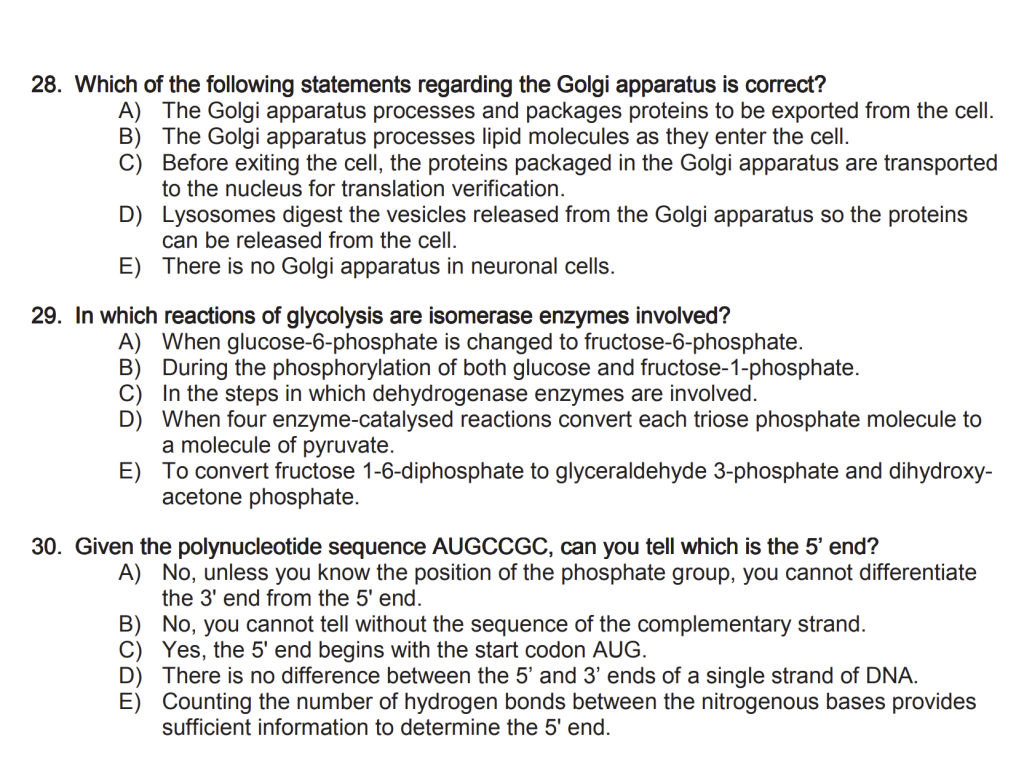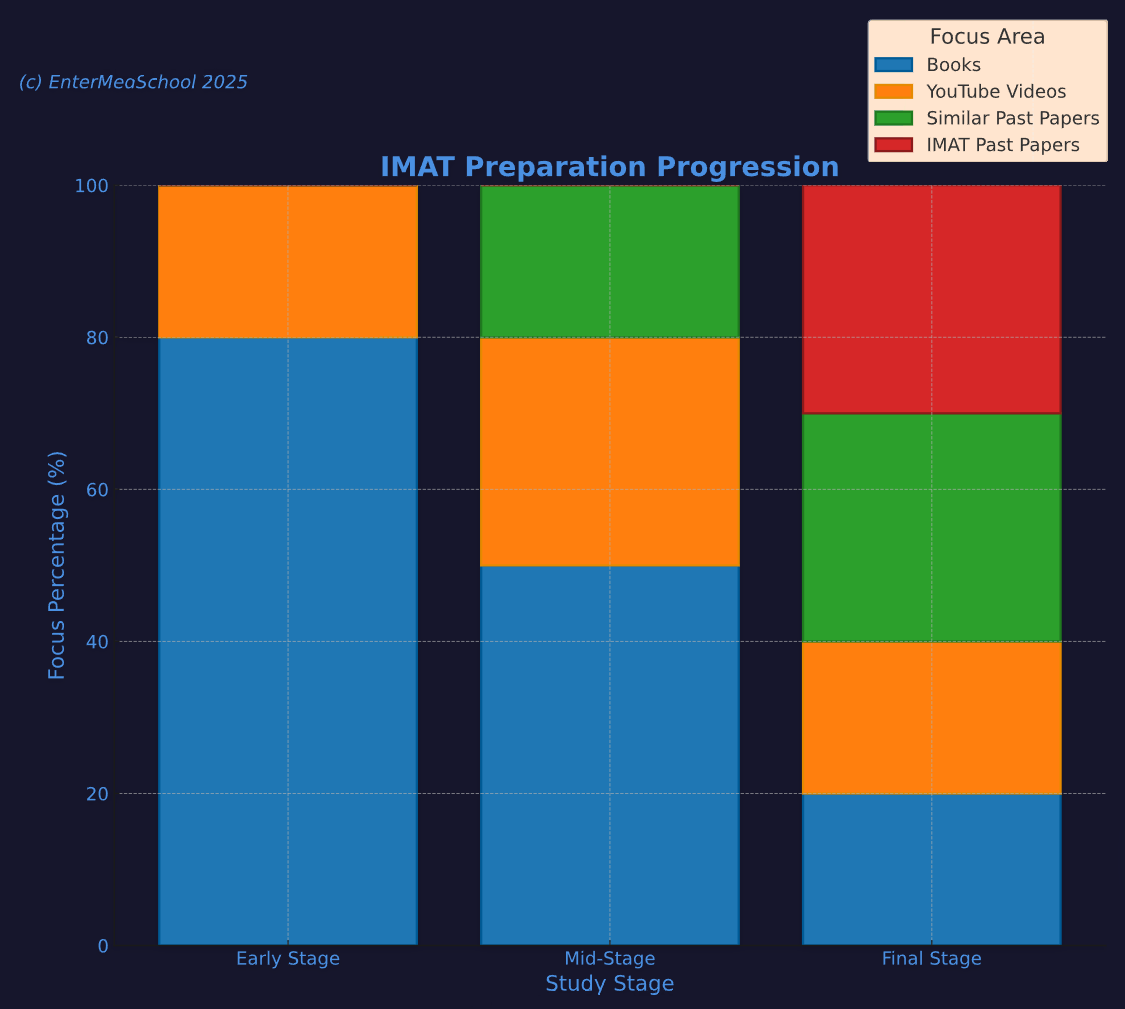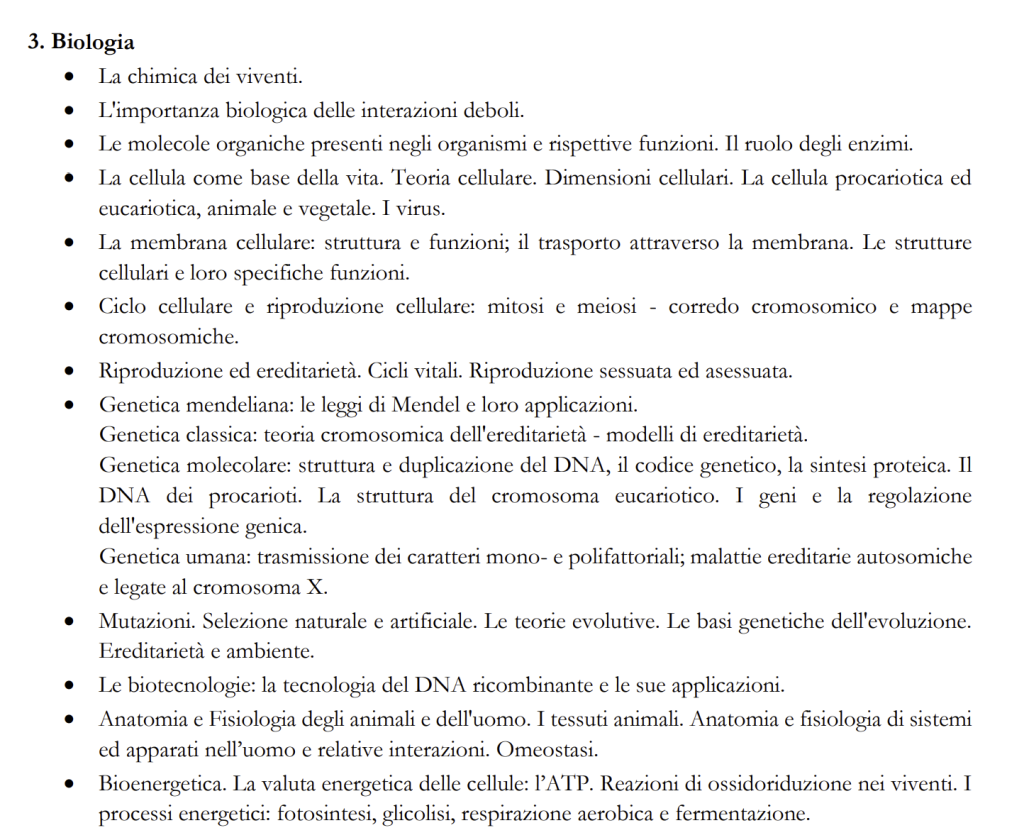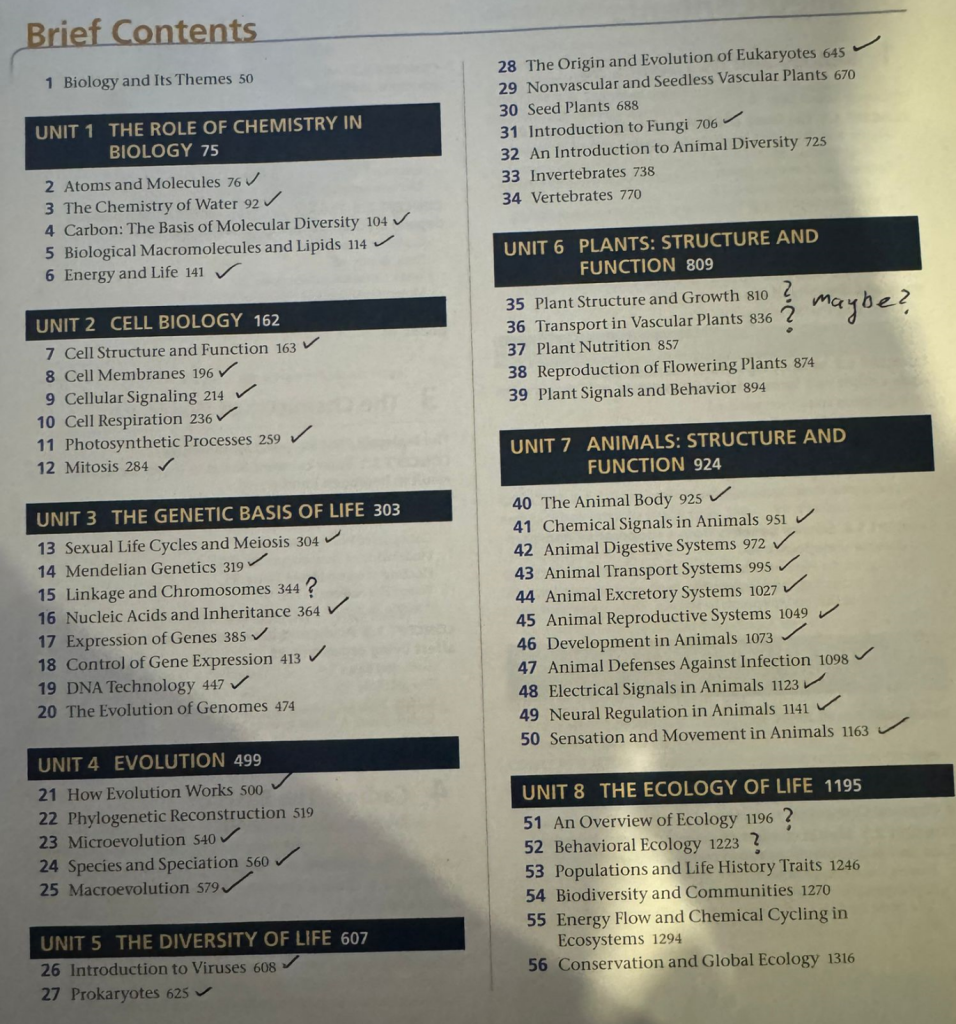
Ari Horesh University of Pavia, Italy
26th of December, 2024Hey guys! Ari here. This article is about the biology section of the IMAT. I had to rewrite it completely because since the IMAT from 2023 onward is no longer composed by Cambridge, but by the Italian Ministry of Education. So I sat down and analysed the new trends of the past few IMATs. This will allow us to predict and understand which topics will be asked on the Biology section of IMAT 2026.
It took me around 2 months to analyze the exams, interview my past students who passed IMAT 2024 and shared their thoughts and feelings with me, and learn more about the entities that write and handle medical admission exams in Italy, and to finally sit down and summarize all the information that’ll allow you to understand how to approach this section correctly.
Content Quick Navigation
You are probably asking yourself, why would I make an entire article just for a single topic? That’s mainly because I believe in separating all sections in terms studying the material itself. From my previous articles (that I recommend reading before this one, and come back to this one now, as well as when we are 1-2 months before the IMAT exam and you are starting to use the past papers to find your weak spots) you can see that I already expanded on general trends, my opinion on the IMAT, choosing a proper university, simulating past papers in the best way, and much more.
But this article will be quite different – it’s an advanced guide you can reference anytime, deeply detailing everything on recent past papers and giving you examples and resources to use before the exam, along with feedback on each specific question.
We’ll also compare the old and new IMATs – because, as I said in other articles, I believe you should be ready to expect any question style. There could be straightforward questions that are one sentence long and take 3 seconds to solve, or they could be paragraph-long, complex questions that take 5 minutes each. When studying for the IMAT Biology section, you should use various sources of questions so you won’t get thrown off and feel demotivated/stressed in the middle taking the actual test, a pretty common scenario.
IMAT 2026 Most Comprehensive Course!
Hey! Ari is here. If you enjoy reading my articles, using my free study materials and communities for the IMAT, consider joining my IMAT 2026 Course! I took 3 years off my studies to work full time on this project – the most comprehensive, popular, and affordable IMAT course available today. Updated based on IMAT 2025’s questions.Comparing and Analysing Past IMAT Biology Sections

Spolier Alert! This article will contain screenshots from IMAT 2023 AND IMAT 2024. You can review it now if you want, but make sure it’s far enough from the next IMAT so you won’t ruin possible simulations. And, stay tuned as we are going to release some simulations ourselves for IMAT 2026 so you won’t have only 2 papers of the current structure to rely on. Make sure to join our WhatsApp group to stay updated!
To understand what we need to know for IMAT 2026, I’ll first lay down all the information I got from my analysis and what you can learn from it. Then, we will move through the general IMAT Biology syllabus and topic list to discuss which resources you can use to study for each and every question that appears from those topics. Let’s get into the analysis:

This example is from IMAT 2024, where the IMAT questions were much shorter and easier than IMAT 2023. The topics that were asked were also pretty basic compared to IMAT 2023.

While IMAT 2024 mainly focused on the simpler topics such as cell structure, basic bioenergetics, and genetics, IMAT 2023 asked many questions on physiology, human genetics, pH calculations, Mendel’s laws etc., which are all known to be more advanced.
My personal conclusion from this would be to make sure you use simulations and sources that look more like IMAT 2023 and offer harder questions (I am working on writing them and releasing them here on the website later on; make sure to join my WhatsApp group if you want to get some updates about it).
While it is possible that IMAT 2026 will look like IMAT 2024 and we will continue to see easy questions, it’s also very possible they will move back to the style of IMAT 2023 which proves that they can write hard questions even without Cambridge.
To illustrate my point, here are two important charts based on the data I collected myself and from my past students, to show you the difficulty of each question (as well as how much time on average it took my students to solve each one) and a distribution of topics. You can see how big of a drop there was between IMAT 2024 and 2023, and I really hope it won’t stay the same, but unfortunately you never know.
IMAT Biology Study Timeline
You should start by reading books and a few YouTube videos about different topics. Books are a great resource since you won’t start scattering all over the internet and risk missing important details. It will help you focused better, and seeing as this section is very broad, it’s essential to stay focused at the beginning; otherwise, you will lose interest and motivation quickly.
Here is a small reminder of how your Early, Mid, and Late IMAT studying stages should look like:

An important tip: when you use the study planner to study biology, don’t get stressed when some days take you more than a single day to complete – it’s completely natural. In actuality, I prefer that my students will take their time to truly understand the material instead of trying to study as fast as possible only to not retain anything. The planner is just a suggestion I made based on how I studied, but I am a huge nerd and had a lot of free time, so I studied for 12-16 hours per day. back then, I also studied really slowly and in a very inefficient way. I will soon redo the study planner, so stay tuned.
While studying, try to make sure you don’t over-memorize things that are just examples, but take your time reading and understanding them. I discuss things such as real-world connections in Pearson’s, similar to what I talked about in my previous articles.
IMAT 2026 Biology Topic List
Let’s take a moment to go over the topic lists of IMAT 2023 and 2024 which we currently assume will also be the same for IMAT 2026, the likelihood of other topics being added to the syllabus for some reason is really low. If they do decide to add new topics, there could be a few possible options that they also teach in Italian high schools (which is where we get our topic list from at the end of the day; the IMAT is a high-school-level exam, by definition). The topics that could be added to the IMAT are ecology, plants, and basic anatomy. Even if I doubt it will happen, don’t ignore this option; it is still possible!

As the IMAT Biology topic list is published on a yearly basis in Italian, the syllabus can be really broad and confusing. Let’s translate it and then break it down.

IMAT 2026 Biology Topic List
- The chemistry of living organisms.
- The biological importance of weak interactions.
- Organic molecules in organisms and their respective functions; the role of enzymes.
- The cell is the basis of life: cell theory, cell size, prokaryotic and eukaryotic cells (animal and plant), and viruses.
- The cell membrane: structure and functions; transport across the membrane; cellular structures and their specific functions.
- The cell cycle and cell reproduction: mitosis and meiosis; chromosome sets and chromosome mapping.
- Reproduction and heredity: life cycles; sexual and asexual reproduction.
- Mendelian genetics: Mendel’s laws and their applications.
- Classical genetics: the chromosomal theory of inheritance and patterns of inheritance.
- Molecular genetics: structure and replication of DNA, the genetic code, protein synthesis, prokaryotic DNA, the structure of the eukaryotic chromosome, genes, and the regulation of gene expression.
- Human genetics: transmission of mono‐ and multifactorial traits; autosomal and X‐linked hereditary diseases.
- Mutations. Natural and artificial selection. Evolutionary theories.
- The genetic bases of evolution.
- Heredity and environment.
- Biotechnologies: recombinant DNA technology and its applications.
- Anatomy and physiology of animals and humans: animal tissues; the anatomy and physiology of human organ systems and their interactions; homeostasis.
- Bioenergetics: the cell’s energy currency, ATP; redox reactions in living organisms; energy‐producing processes (photosynthesis, glycolysis, aerobic respiration, fermentation).
Now let’s break down each of the topics above and give examples from Pearson’s biology and past papers.
IMAT Biology Topic #1: “The Chemistry of Living Organisms”
This topic sounds very broad, but they ask specific questions about it. You should know a few important core ideas:
- The different macromolecules we have in biological environments and their role.
- Why do we use energy coupling in biochemistry, what are the benefits of having metabolic pathways, and what do we get in and out of the cells?
- The basic idea of acid bases and the buffer system.
- Basic memorization of common molecules we have in biochemistry and their structure.
- Properties of water: an extremely important and frequently asked question in past biology sections of the IMAT, but also sometimes in Physics and Chemistry.

I will add pictures from Pearson’s biology to each section so you will know which subjects and units from the book you should follow to cover each section of the biology topic list. If there’s a checkmark next to it, it means it’s in the syllabus, while a question mark means that it might appear on the upcoming IMAT, so I recommend studying it anyway, even if it’s not part of the study planner.
Take your time initially and don’t rush through the material. Many students think that the basic material won’t be asked about IMAT because “it’s just too basic”. Hence, they just read it, understand it quickly because it’s easy, and move on to the more challenging subjects like physiology and genetics. Then, they realize later that they forgot the basics and make silly mistakes on the IMAT – which asks exactly about the basic stuff! Remember, the IMAT isn’t difficult; you will get basic questions, so it’s important to take the appropriate time to understand the basics really well.
IMAT Biology Topic #2: “The Biological Importance of Weak Interactions”
This topic is very important for both chemistry and biology. In biology, molecules move through the membrane and interact with each other based on the polarity and weak interactions between themselves and other molecules. Many questions can be asked for both biology and chemistry.
- Make sure you know the different types of intermolecular forces
- Understand how polarity and charge affect different molecules and particles and block them from crossing the membranes of different structures and tissues in the body.
- Understand the concept of the concentration gradient and electric gradient, this is probably the concept that will repeat the most from now until you finish medical school. This gradient is what actually aids or blocks certain particles from entering or leaving the cell. We can control and create such gradients on purpose, which allows us to have life.
IMAT Biology Topic #3: “The Organic Molecules Present in Organisms and Their Respective Functions; The Role of Enzymes.”
You should know the most important structures inside the cell, their type, and purpose. For example, you have to know what is the energy currency of the cell, types of carrier and channel proteins, types of sugars, different types of enzymes, the structure of the enzyme itself, and ways to inhibit / slow it down (like competitive and non-competitive inhibition – and how their graphs will look like).

IMAT Biology Topic #4: “The Cell as the Basis of Life: Cell Theory, Cell Dimensions, Prokaryotic and Eukaryotic Cells (Animal and Plant), and Viruses”
I recommend learning the differences between all life domains and cell types for this topic. One of the more common questions asked on the IMAT is the difference between them and the specific purpose of some cell structures.

IMAT Biology Topic #5: “The Cell Membrane: Structure and Functions; Transport Across the Membrane; Cellular Structures and Their Specific Functions”
The cell membrane gets a topic on its own because it is so important; this is what actually makes the cell a cell, and it allows controlling what enters or leaves it. I personally noticed some repetitive patterns in the past few IMATs, so here are some important points to learn:
- Different types of channel and carrier proteins, as well as their transport mechanisms.
- Types of sugars and macromolecules that we can find in the membrane.
- hydrophobic and hydrophilic parts of the membrane, why it is a bilayer, and the different sizes of different cells.
- Which organelles are bound by 2 or 1 bilayers?
- The type of bonds connecting things within the layer.

IMAT Biology Topic #6: “The Cell Cycle and Cell Reproduction: Mitosis and Meiosis, Chromosome Set, and Chromosome Mapping”
This topic is my personal favorite. What I love teaching my students the most in my IMAT course is how to count the number of chromosomes in different stages. I didn’t have a single student who knew how to use those tricks or gave me the correct answer about the number of chromosomes and different structures in different stages, and this is exactly what they like to ask. When Cambridge wrote the IMAT, the questions were very difficult; now however, they luckily seem more straightforward and not as difficult. Try to focus on the differences between sexual and asexual reproduction, and the differences between Eukaryotic cells and Prokaryotic when it comes to mitosis, meiosis, binary fission, etc., as well as all of the substeps of those processes and what happens in each one.

IMAT Biology Topic #7: “Reproduction and Heredity: Life Cycles, Sexual and Asexual Reproduction”
As I said, this one is mainly about the reproductive part. Still, you should also know pretty well the physiology of reproduction, the menstrual cycle, and the hormones involved. What is puberty? In the next section, you will need to learn specifically about genes and modes of inheritance.
IMAT Biology Topic #8: “Mendelian Genetics: Mendel’s Laws and Their Applications; Classical Genetics (The Chromosomal Theory of Inheritance and Inheritance Patterns)”
This one is all about recognizing patterns of inheritance as well as knowing how to read and write genetic pedigrees! This is a question I get asked a lot while teaching; you don’t really need to memorize common pathologies and if they are recessive dominant or sex-linked.


IMAT Biology Topic #9: “Molecular Genetics: DNA Structure and Replication, the Genetic Code, Protein Synthesis; Prokaryotic DNA; The Structure of the Eukaryotic Chromosome; Genes and the Regulation of Gene Expression”
This topic is being asked since IMAT 2011, and it mainly revolves around knowing the steps and exceptions of the central dogma. I would focus on the difference between Eukaryotic and Prokaryotic cells, operons (Lac and Tryptophan operons are asked; they usually give them as basic examples in the book as well, but this is one of the examples you should know well as they describe repressible and inducible operons) and codons, pre-mRNA processing in Eukaryotic, as well as the subunits of the ribosomes and what happens inside of them (the chambers inside, the different enzymes involved, and mainly the direction of the strands involved).
IMAT Biology Topic #10: Anatomy and Physiology of Animals and Humans

This is quite a broad section. I mentioned above all of the sections in Pearson’s biology (which is pretty much the entire physiology part, and even some basic anatomy, for example, names of bones and general muscles and organs). IMAT 2024 didn’t have a single physiology question asked – it was very surprising; every year, we have at least 2-3 questions on physiology, and it seemed to be because they just rushed through writing this paper as they waited for the last moment with everything. It might happen again in IMAT 2026. I don’t recommend taking any chance, especially when you will need to know this material for medical school anyway, and it is a very interesting topic to study. Basic physiology is not too difficult as you don’t need to memorize many things (unlike medical school) but mainly understand the overall idea and homeostatic hormones and pathways. All of the topics are equally important based on past papers; if I didn’t mention it at all, it doesn’t mean it’s not on the syllabus, it probably is, it’s just that the chance that it’ll show up is lower.
IMAT 2026 Important Anatomy and Physiology Topics
- How skeletal muscle unit contracts
- How neurons conduct and release the transmitter outside to the synapse.
- How the heart works and the general anatomy of the heart
- What are the general locations of the CNS and, mainly, the brain? What are the different parts responsible?
- basic ideas of cones and rods in the eye and the vision pathway from the rods/cons to the retina
- Names and locations of major bones and organs in the body (for anatomy)
- common reflects arcs and how they work and skip the brain
- The nephron – how does it work and what each part does
- The digestive enzymes and hormones are involved.
Key Takes
The biology section of the IMAT exam is the most important and interesting part of the test. It has the vast majority of questions you can solve fairly quickly, so it’s a gold mine of free points. If you read this article carefully and only study the subjects based on past papers and what they used to ask, you should do really well on IMAT 2026. If you have any questions, please comment below or just open the chat and discuss with me live!





